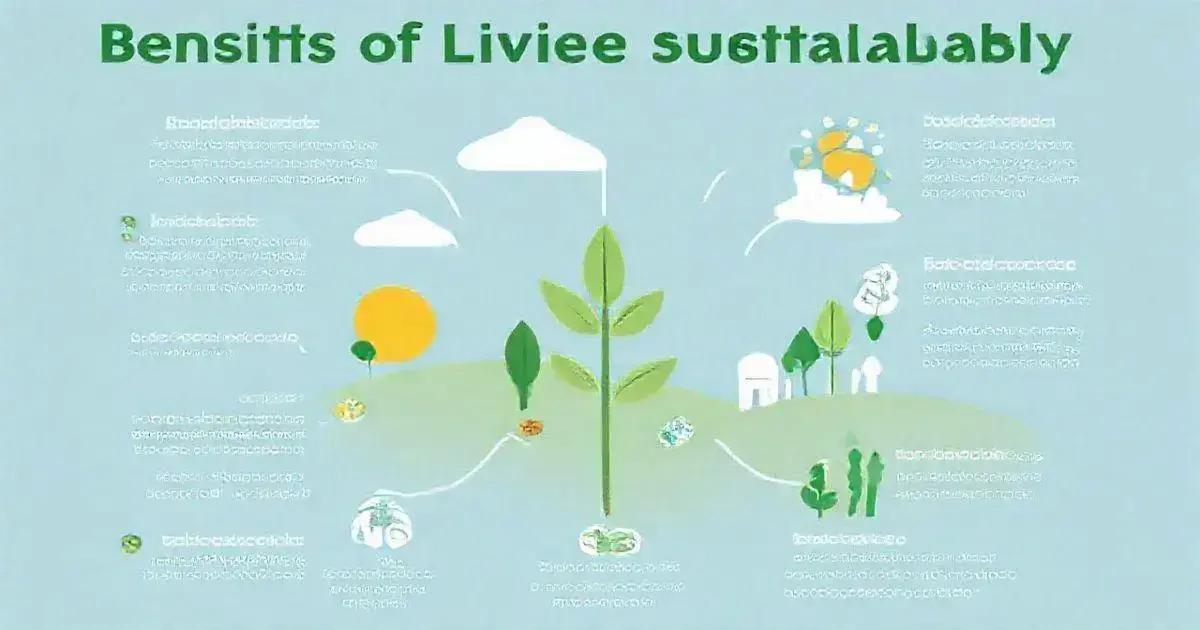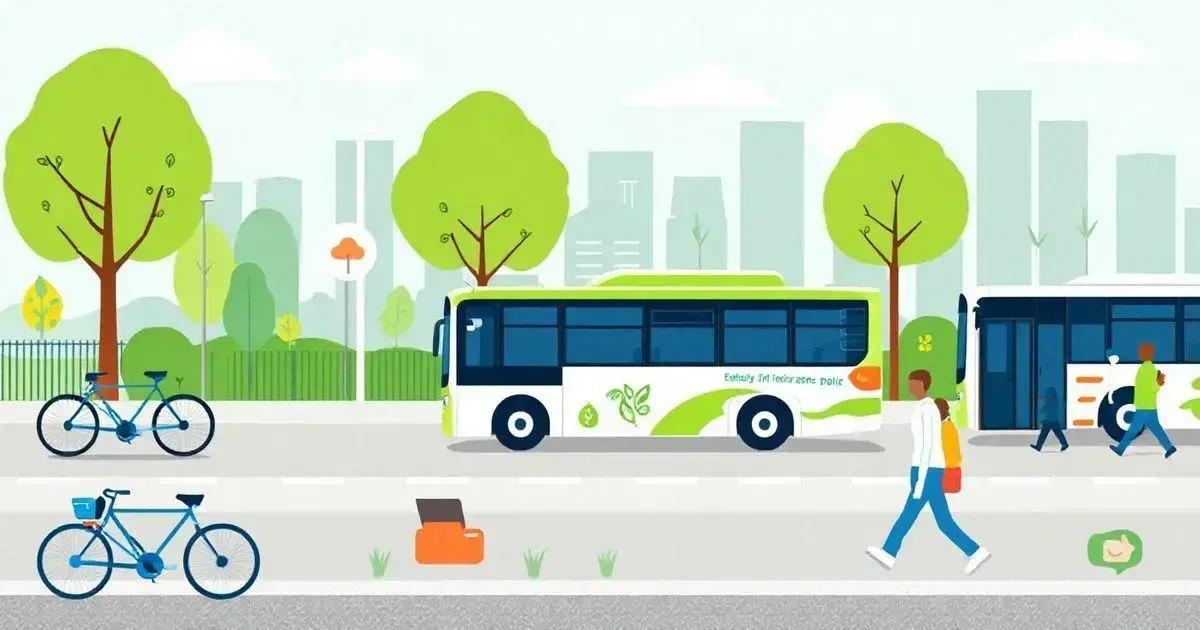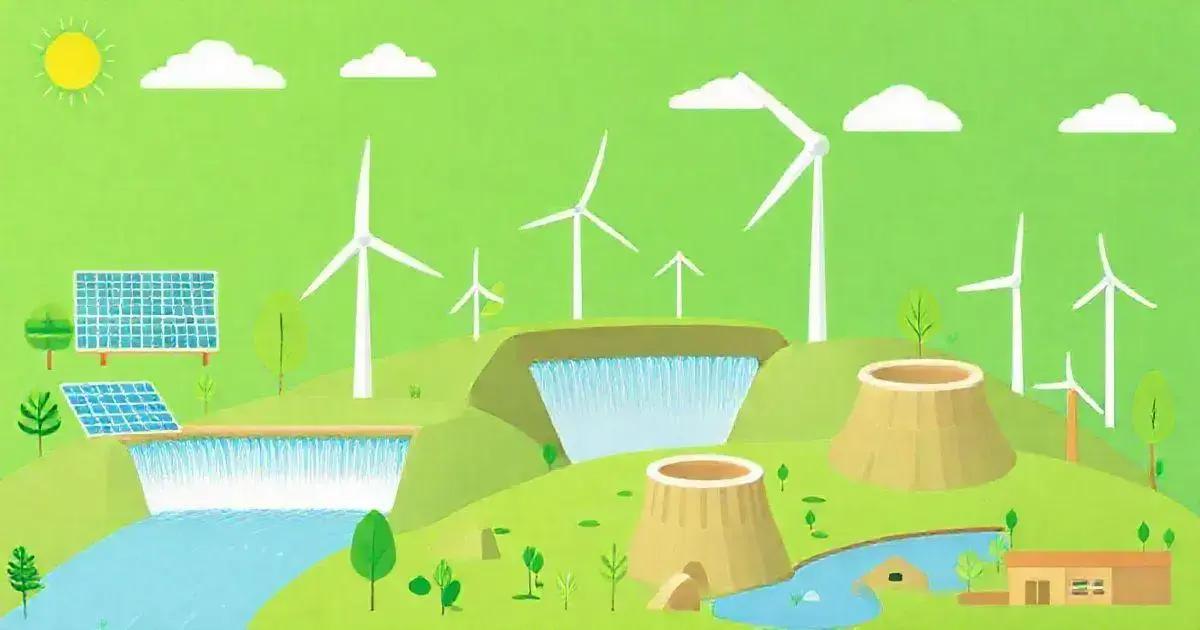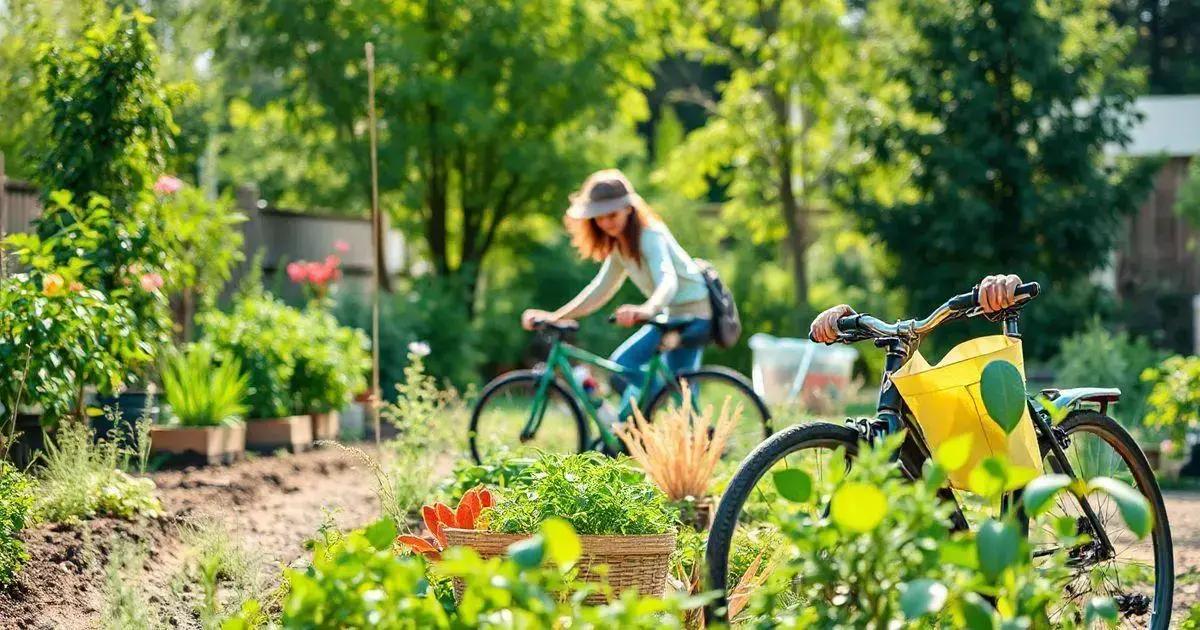Índice
Sustainable lifestyle choices are no longer just a trend but a necessity in today’s world. With environmental challenges mounting, adopting eco-conscious habits can make a meaningful difference. From reducing waste to embracing renewable energy, every choice matters in creating a more sustainable future.
By making small yet impactful changes—like using eco-friendly products, opting for green transportation, and supporting local organic foods—you can significantly reduce your carbon footprint. These decisions not only benefit the planet but also promote a healthier, more fulfilling way of life.
Ready to explore how you can incorporate sustainable lifestyle choices into your routine? Discover practical tips and strategies that align with your values and contribute to a brighter, greener tomorrow.
Understanding Sustainable Lifestyle Choices
Understanding Sustainable Lifestyle Choices is crucial for anyone looking to make a positive impact on the environment. These choices encompass various daily actions that contribute to environmental protection, resource conservation, and overall well-being.
At its core, living sustainably means making decisions that reduce our ecological footprint. This includes being mindful of the products we consume, the energy we use, and how we interact with our surroundings.
The Importance of Awareness
Developing an awareness of our consumption habits is the first step towards sustainability. Ask yourself: What am I buying? Where does it come from? How is it made? By understanding the lifecycle of products, we can choose options that are eco-friendly.
Types of Sustainable Choices
Sustainable lifestyle choices can be categorized into different areas: waste reduction, energy conservation, conscious eating, and ethical purchasing. Each of these categories plays a vital role in shaping our impact on the planet.
Waste Reduction
Reducing waste starts at home. Simple actions like recycling, composting, and choosing products with minimal packaging can greatly contribute to less landfill waste.
Energy Conservation
Energy-efficient appliances, using public transport, or simply turning off lights when not in use are all effective methods to conserve energy. Investing in renewable energy sources like solar panels also supports a sustainable future.
Conscious Eating
Food choices significantly influence our ecological footprint. By buying local, seasonal produce and reducing meat consumption, we can support local economies and lessen the environmental impact of food transportation.
Ethical Purchasing
Finally, consider where your products come from. Choose brands that prioritize sustainable practices and ethical sourcing. Supporting companies that focus on sustainable production can drive positive change.
The Benefits of Living Sustainably

The Benefits of Sustainable Lifestyle Choices are numerous and extend beyond just environmental impacts. Choosing a sustainable lifestyle can lead to significant improvements in personal well-being, community health, and the planet’s future.
One of the main benefits of adopting Sustainable Lifestyle Choices is the reduction of our ecological footprint. By decreasing waste and conserving resources, we help mitigate climate change and protect ecosystems.
Improved Health
Living sustainably often involves eating healthier foods. By choosing fresh, local, and organic produce, we consume fewer chemicals and support better nutrition. Additionally, reducing our reliance on processed foods leads to better overall health.
Cost Savings
Sustainable choices can also result in cost savings. By using less energy, reducing water usage, and buying in bulk, households can lower their utility bills and shopping expenses.
Stronger Communities
Living sustainably fosters a sense of community. Supporting local businesses and participating in community gardens creates stronger, united neighbourhoods. This not only benefits the local economy but also builds relationships among community members.
Enhanced Quality of Life
A sustainable lifestyle often leads to a greater appreciation for nature. Spending time outdoors, enjoying green spaces, and connecting with local environments can improve our mental health and happiness.
Generational Impact
By making Sustainable Lifestyle Choices now, we create a better world for future generations. Teaching children about sustainability ensures they carry these values forward, leading to a more environmentally conscious society.
Innovation and Opportunities
Embracing sustainable practices can drive innovation in various sectors. Companies focusing on eco-friendly solutions and green technologies are paving the way for new job opportunities and economic growth.
Tips for Reducing Waste at Home
Tips for Reducing Waste at Home can help you live a more sustainable life while benefiting the environment. Here are some practical steps you can take to minimise waste in your household.
1. Embrace Reusable Items
Instead of single-use products, consider investing in reusable items. Use cloth bags for shopping, stainless steel or glass containers for food storage, and washable cloths instead of paper towels. This simple switch greatly reduces waste.
2. Compost Your Food Scraps
Composting is an excellent way to recycle organic waste. Set up a compost bin for fruit and vegetable scraps, eggshells, and coffee grounds. This not only reduces waste but also provides nutrient-rich soil for your garden.
3. Buy in Bulk
Buying in bulk can drastically cut down on packaging waste. Look for bulk bins at local stores for grains, nuts, and snacks. Bring your own containers to fill, which helps reduce plastic waste.
4. Plan Your Meals
Meal planning prevents food waste by helping you buy only what you need. Create a shopping list based on your meal plan and stick to it. Use leftovers creatively in new dishes.
5. Practice Smart Recycling
Make sure you’re recycling correctly. Rinse containers before recycling, and know which materials are accepted in your local recycling programme. Educating yourself can help prevent contamination and keep items out of landfills.
6. Avoid Overbuying
Impulse buying leads to waste. Be intentional with your purchases and ask yourself if you really need the item. Delaying a purchase for a few days often helps you decide if it’s truly necessary.
7. Repair Instead of Replace
Before tossing out broken items, see if you can repair them. Whether it’s clothing, appliances, or electronics, many things can be fixed with a little effort. Look for local repair shops or community repair events.
Sustainable Transportation Options

Sustainable Transportation Options play a vital role in reducing our carbon footprint and promoting a greener planet. Adopting eco-friendly transport methods can significantly lessen the impact of our travels.
1. Walking
Walking is the most sustainable form of transport. It requires no fuel, produces no emissions, and is great for your health. Consider walking for short distances instead of driving.
2. Bicycling
Cycling is another excellent option. It is a fast and environmentally friendly way to get around. Many cities have dedicated bike lanes, making it safer to cycle. Plus, it helps you stay fit!
3. Public Transport
Using public transportation options, such as buses and trains, can reduce the number of cars on the road. Commuting via public transport lowers emissions, saves money, and can create a sense of community.
4. Carpooling
If you must use a car, consider carpooling with others. Sharing rides can reduce the number of vehicles on the road, lower fuel costs, and lessen traffic congestion.
5. Electric Vehicles (EVs)
Electric vehicles are a growing sustainable option for transportation. They produce zero tailpipe emissions and can be powered by renewable energy sources. If you can, consider switching to an EV.
6. Hybrid Vehicles
Hybrid vehicles combine a traditional petrol engine with an electric motor, providing better fuel efficiency than standard cars. They are a transitional option towards full electric vehicles.
7. Alternative Fuels
Exploring alternative fuels such as biodiesel or hydrogen can also contribute to sustainable transportation. These fuels produce fewer emissions compared to fossil fuels, supporting a cleaner environment.
Eco-Friendly Eating and Nutrition
Eco-Friendly Eating and Nutrition is essential for promoting a healthy lifestyle and protecting the planet. By making mindful food choices, we can reduce our environmental impact while nourishing our bodies.
1. Choose Local Produce
Buying local fruits and vegetables supports local farmers and reduces transportation emissions. When possible, shop at farmers’ markets or join a local co-op to enjoy fresh, seasonal produce.
2. Opt for Organic
Organic foods are grown without synthetic pesticides and fertilizers, making them a better choice for the environment. By choosing organic, you also support sustainable farming practices that are healthier for the soil and water.
3. Reduce Meat Consumption
Meat production is resource-intensive and contributes to greenhouse gas emissions. Consider adopting a plant-based or flexitarian diet, which focuses on vegetables, fruits, and grains while reducing meat intake.
4. Minimise Food Waste
Plan your meals and buy only what you need to reduce food waste. Use leftovers creatively in new dishes and compost scraps to enrich the soil. This not only saves money but helps the environment too.
5. Use Sustainable Ingredients
Select sustainable seafood and ethically sourced products. Look for certifications such as MSC or ASC for fish and shellfish, ensuring they are harvested in environmentally responsible ways.
6. Drink Water Wisely
Stay hydrated while minimising plastic waste by using a reusable water bottle. Taps water is often safe to drink, so consider filling your bottle from home instead of buying bottled water.
7. Grow Your Own Food
If possible, create a home garden. Growing your own herbs, fruits, and vegetables can be rewarding and significantly reduce your carbon footprint while providing fresh, delicious produce.
Green Energy Solutions

Green Energy Solutions provide us with ways to generate power while minimising harm to the environment. These technologies focus on using renewable resources and improving energy efficiency, helping to sustain our planet’s health.
1. Solar Energy
Solar panels convert sunlight into electricity. They can be installed on rooftops or in solar farms. Using solar energy reduces reliance on fossil fuels and lowers greenhouse gas emissions.
2. Wind Energy
Wind turbines harness the power of wind to generate electricity. Wind farms can be found both onshore and offshore. This energy source is clean and sustainable, producing no air pollutants.
3. Hydropower
Hydropower generates electricity by using flowing water to turn turbines. Dams and river systems are often used for this purpose. It is one of the most established forms of renewable energy.
4. Geothermal Energy
Geothermal energy taps into the earth’s heat for power generation and heating. It harnesses steam or hot water from underground sources, providing a reliable and consistent energy source.
5. Biomass Energy
Biomass involves using organic materials like plants, wood, and waste to produce energy. When burned, they release stored energy which can be used for heating or electricity generation.
6. Energy Efficiency
Improving energy efficiency is also vital. Using energy-efficient appliances, lighting, and insulation can significantly reduce energy consumption and lower bills.
7. Community Solar Projects
Community solar projects allow multiple households to benefit from a single solar installation. This makes solar energy more accessible and helps individuals who cannot install panels on their roofs.
Creating a Sustainable Wardrobe
Creating a Sustainable Wardrobe is an impactful way to reduce your environmental footprint while still enjoying fashion. It involves making conscious choices about clothing items, materials, and practices.
1. Choose Sustainable Fabrics
Opt for clothes made from organic, recycled, or eco-friendly materials. Fabrics like organic cotton, Tencel, and hemp use fewer chemicals and have lower environmental impacts compared to conventional options.
2. Shop Second-Hand
Buying second-hand clothes is an effective way to extend the life of garments. Thrift shops and online platforms allow you to find unique pieces without contributing to fast fashion.
3. Invest in Quality
Quality is key in a sustainable wardrobe. Choose durable clothing that can withstand wear and tear. Investing in higher-quality pieces means they last longer, reducing the need for frequent replacements.
4. Embrace a Capsule Wardrobe
A capsule wardrobe consists of a small number of versatile pieces that can be mixed and matched. This approach limits the quantity of clothing you need while maximizing outfit options.
5. Care for Your Clothes
Proper care can extend the life of your garments. Follow washing instructions, use cold water, and air dry when possible. This helps minimize energy use and keeps clothes in good condition.
6. Donate or Recycle Unwanted Items
Instead of throwing away old clothes, donate them or recycle them. Many communities have textile recycling programs that can repurpose worn-out clothing, keeping waste out of landfills.
7. Support Ethical Brands
Look for brands that prioritize sustainability and ethical practices. Research companies that are transparent about their sourcing and production methods to ensure they align with your values.
FAQ – Frequently Asked Questions about Sustainable Lifestyle Choices
What are sustainable lifestyle choices?
Sustainable lifestyle choices involve making daily decisions that reduce your environmental impact, such as using eco-friendly products, reducing waste, and choosing renewable energy sources.
How does eco-friendly eating contribute to sustainability?
Eco-friendly eating promotes the use of local and organic foods, which reduces carbon footprints and supports sustainable farming practices while providing healthier nutrition.
What are some tips for reducing waste at home?
To reduce waste at home, consider using reusable items, composting food scraps, buying in bulk, and minimising food waste through meal planning.
How can I make my wardrobe more sustainable?
You can create a sustainable wardrobe by choosing sustainable fabrics, shopping second-hand, investing in quality items, and caring for your clothes properly.
What are green energy solutions?
Green energy solutions refer to renewable energy sources like solar, wind, hydro, and geothermal energy that produce little to no environmental harm compared to fossil fuels.
Why is it important to reduce meat consumption?
Reducing meat consumption can decrease greenhouse gas emissions, lower land and water usage, and promote better health by encouraging a plant-based diet.
Check out our article on Urban Lifestyle to explore tips and trends for thriving in a fast-paced city environment.
